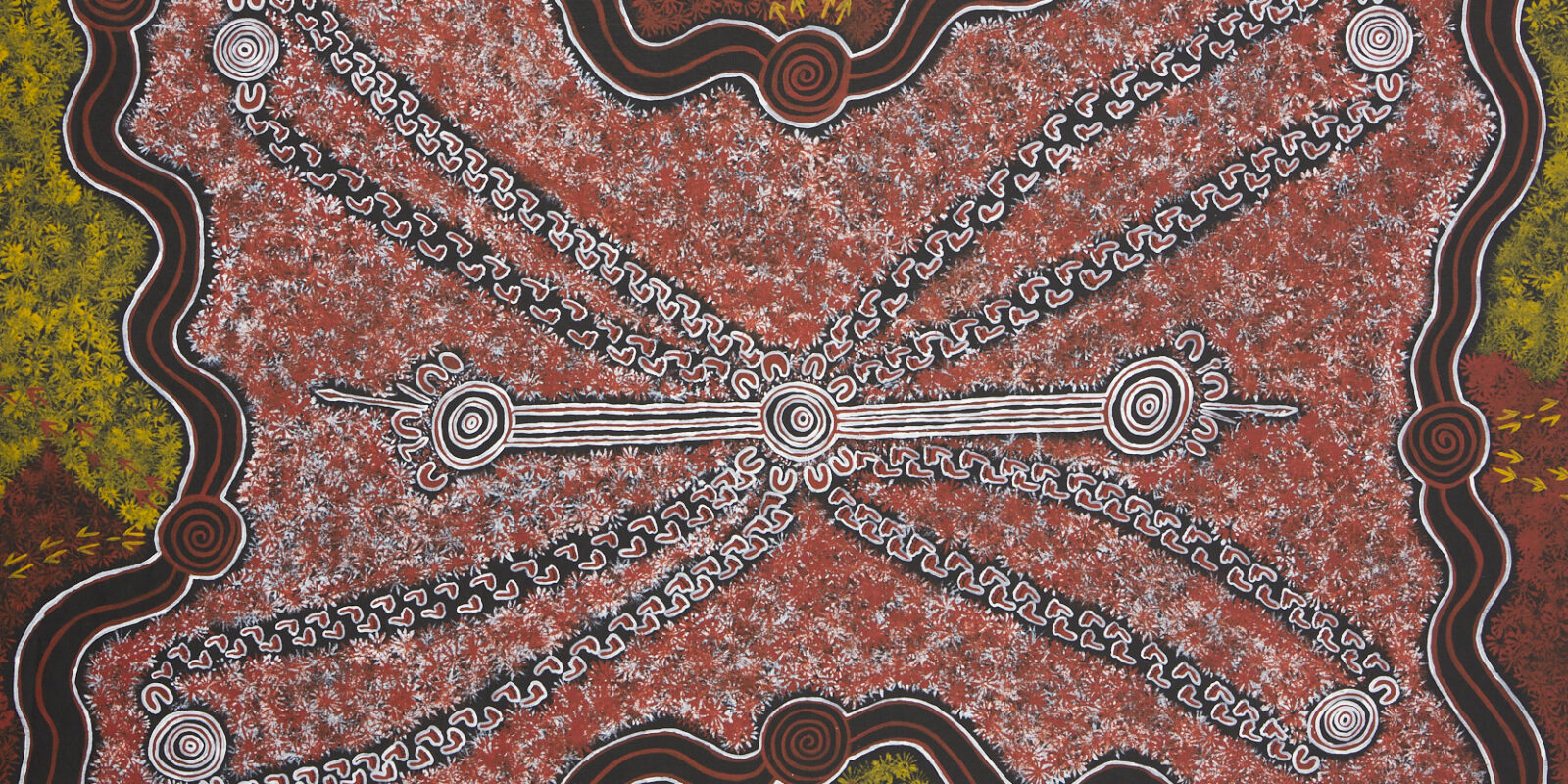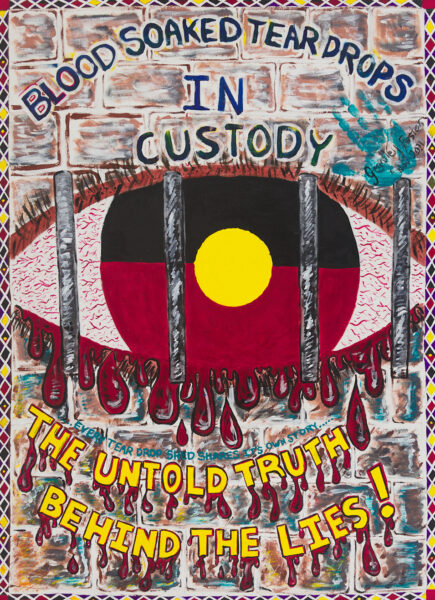
The Torch’s program provides artists the opportunity to express what matters most to them – to reengage with old knowledge or embrace the newly learned, to flex a well-crafted skill or try their hand at a new one – and this has allowed for an array of visual and narrative storytelling.
Artists from The Torch often explore themes which are at times polar opposites, such as history or the present, exploring a trauma or finding a path to healing. The works of Aroona (Wergaia/Wotjobaluk peoples) and Grantley (Kuringai/Darug peoples) provide a premier example of this.
Aroona has mined his own memories and experiences of Country to occupy his time whilst incarcerated – its sacred traditions and family connections. ‘My artwork is deeply connected to Country,’ he states. ‘I often paint five waterholes to represent the five tribes of my Country, along with the big river that runs through our land. Each element in my work tells a story, and I paint with purpose and meaning.’

In contrast, the work of Grantley examines the immediate reality of being behind bars, not just for themselves but for those around them – family, friends and community. Of their work titled Blood Soaked Tear Drops, Grantley states, ‘Every custodial sentence has an effect on so many lives. With victims on both sides of the fence. Sometimes with the sentence being the very cause of future victims. A failed system shielded by lies, leading to deaths, suicides and much more.’

Whether paying homage to their Culture or exploring their own incarceration, a First Nation’s artist’s response to the Criminal Justice System is unique to each person. Imagined and vibrant, or honest and stark, artists from The Torch often openly examine the troubled path that led them to this time and place, or allows them to reconcile with that past and connect to that special somewhere they really want to be.